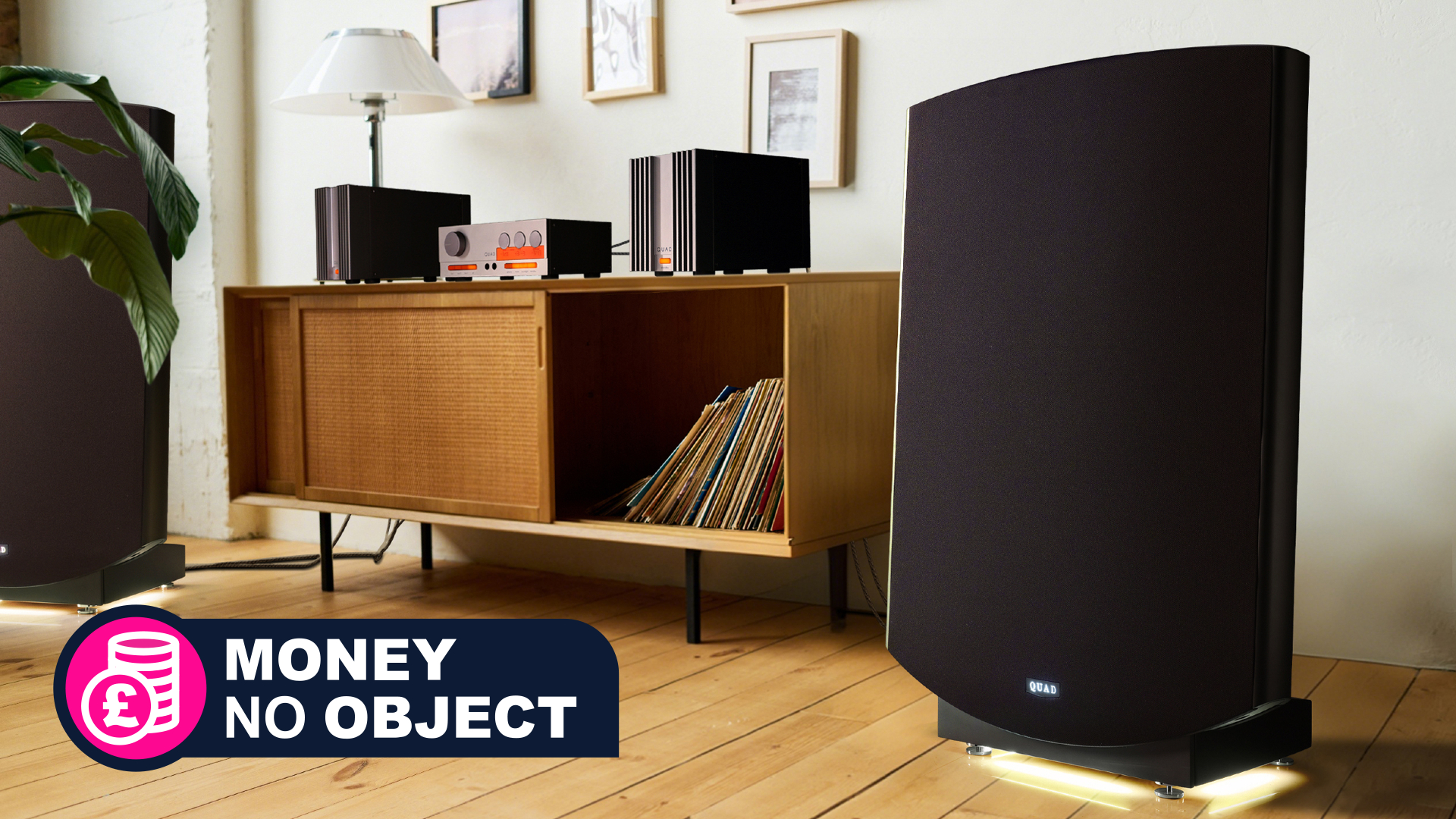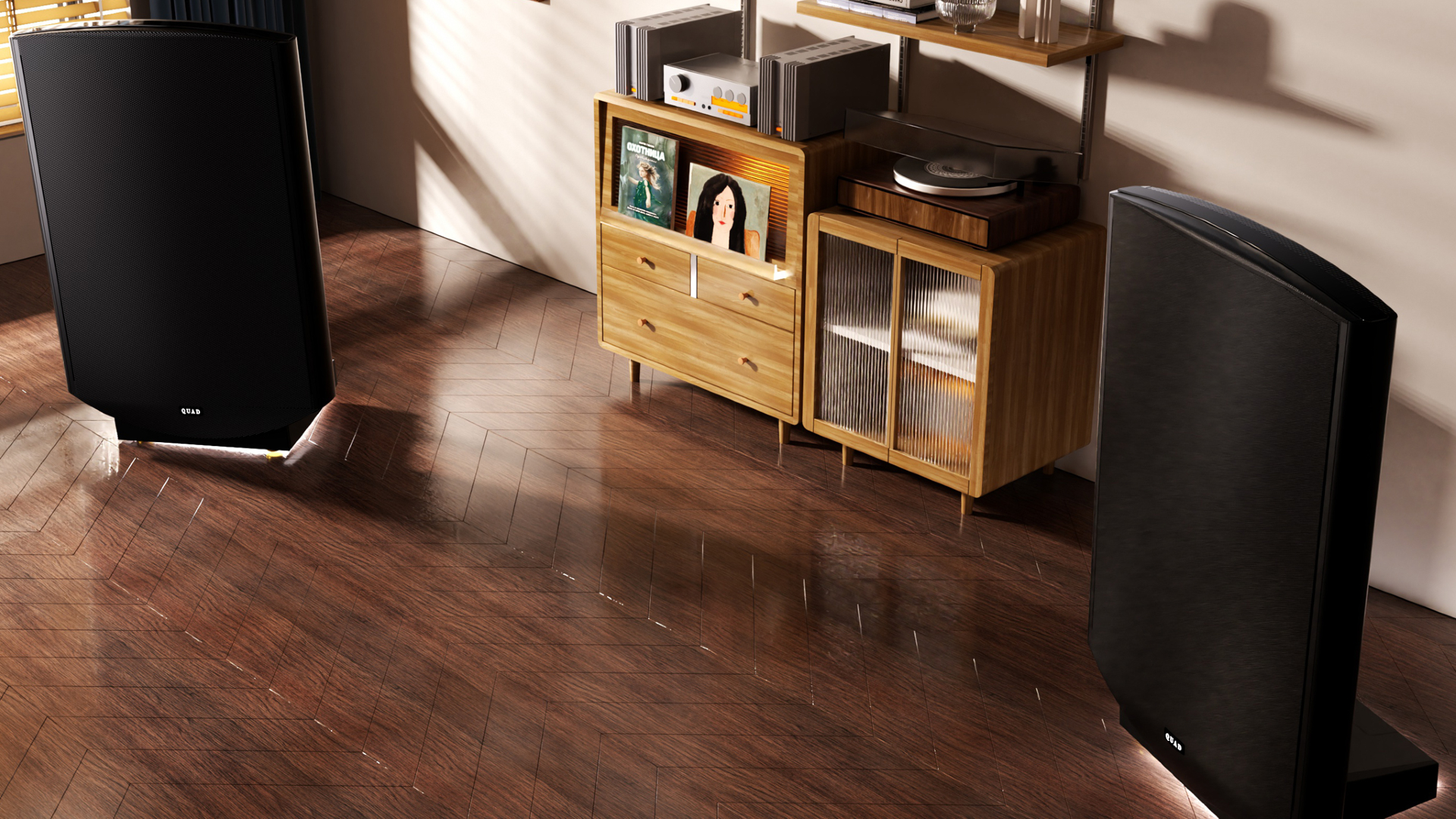Quad's new Gen X ESL electro-static speakers look nothing like the 1957 originals, and I really, really want them

We love to give practical buying advice on the latest gadgets here at TechRadar. But sometimes what we love even more is to indulge in the most high-end, cutting-edge, luxurious tech on the planet. That's what we bring you in these Money no Object columns – you can read the whole series here.
Before I get into Quad's new (and quite stunning) speakers specifically, a quick brief on how full-range electrostatic designs differ from traditional passive stereo speakers.
It's a piece of engineering that Quad's founder, Peter Walker, gave to the world with the first Quad ESL speaker pair in 1957, so it's like buying ANC headphones from Bose – you're buying from the firm that wrote the book on it.
Most speakers generate sound waves by using dynamic drive units; think conical or dome-shaped diaphragms, moving back and forth in pistonic motion in response to an audio signal (made by a voice-coil in a magnetic field). Electrostatic speakers replace all of that with ultra-thin panel-shaped diaphragms, electrically charged and suspended in an electrostatic field to generate movement.
At the heart of a Quad ESL speaker, said panels contain a diaphragm of fine Mylar film ten times thinner than a human hair. This Mylar film is coated with a high-resistance conductive material and suspended between two perforated metal plates called stators. Quad says this particular setup is unique, but the theory is that something incredibly light is therefore far more dynamically agile, because it can respond to signal transients with far greater speed and accuracy.

Feel those Quads
Quad ESL updates are like hen's teeth – there have only been five generations since the original ESL. The inaugural model (known these days as the ESL 57) was eventually replaced by the ESL 63 in 1981. Then, in 1999, the ESL 988 and ESL 989 arrived – the first time Quad had offered a medium-sized ESL model, accompanied by a new, larger option in the 989. These were replaced by the ESL 2805 and ESL 2905 in 2006, and finally, the ESL 2812 and ESL 2912 in 2012.
Cut to today, 13 years after the last revision, and a sixth Quad ESL generation is now ready to launch, namely the new ESL 2812X and ESL 2912X – otherwise known as the Quad Generation X models (and a proud day for Gen X representation).
Both models are broader than regular ‘box’ or 'tower' speakers (you love to see it), but with a slimmer side profile as you'd expect from electrostatic panels – apart from the necessary plinth. The ESL 2812X has a height of 107cm; the ESL 2912X stands 40cm taller. The former incorporates four electrostatic panels, while the latter includes six.
Sign up for breaking news, reviews, opinion, top tech deals, and more.
Listen in Quad
No, not quadrophonic sound (I see you and I like that your brain went there though), we're still talking about Quad's exceptional stereo speakers. I've been lucky enough to hear them once, in 2019. It was a brief listen, but the clarity and apparent lack of distortion was, to my ear at least, exceptional. Some of the best stereo speakers I've heard? Without a doubt.
Since the 1981 ESL 63, Quad tells us that the electrostatic panels handling the higher audio frequencies have been "uniquely configured with a ‘concentric ring’ electrode design". What that means is that rather than allowing all sections of the diaphragm to move uniformly, the speakers are engineered with the aim of making the audio signal seem to emanate from a singular point in space.
The ESL Generation X has been six long years in the making, too, starting in 2019. Using techniques such as advanced laser-precision metrology, Quad seems to have systematically upgraded its processes of spraying, etching, tensioning, and assembly here.
Forget traditional wood trims, too; these speakers adopt a classy all-black-everything minimalist approach, apart from one subtle embellishment. It's a new LED Halo lighting feature – which can be dimmed or switched off – to illuminate the speakers from beneath, giving the impression that they’re floating above the floor (not unlike the Bowers & Wilkins Zeppelin Pro, if I'm honest).
Pricing? Let's. The Quad ESL 2812X and ESL 2912X are available from mid-August, with RRPs of £10,999 and £12,999 per pair, respectively. That would make the smaller speaker pair around $14,779 or AU$22,619 before any associated duties and, of course, shipping, give or take.
As you can probably tell, I'm a huge fan. Best start saving then…
You may also like
- See our roundup of the best wired headphones
- Considering wireless headphones? Consult our pick of the best over-ear headphones
- Want ANC? You need our guide to the best noise-cancelling headphones

Becky became Audio Editor at TechRadar in 2024, but joined the team in 2022 as Senior Staff Writer, focusing on all things hi-fi. Before this, she spent three years at What Hi-Fi? testing and reviewing everything from wallet-friendly wireless earbuds to huge high-end sound systems. Prior to gaining her MA in Journalism in 2018, Becky freelanced as an arts critic alongside a 22-year career as a professional dancer and aerialist – any love of dance starts with a love of music. Becky has previously contributed to Stuff, FourFourTwo and The Stage. When not writing, she can still be found throwing shapes in a dance studio, these days with varying degrees of success.
You must confirm your public display name before commenting
Please logout and then login again, you will then be prompted to enter your display name.